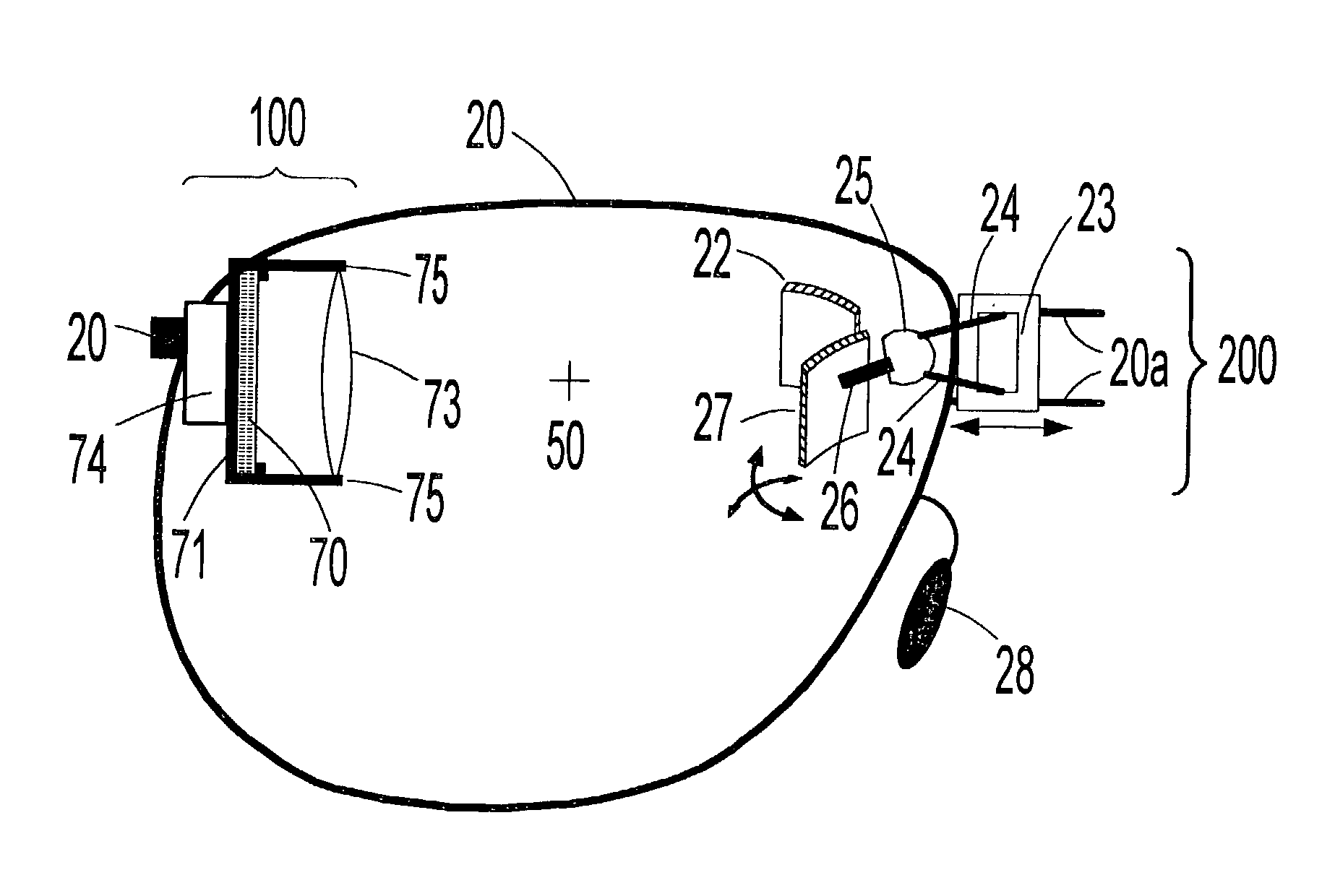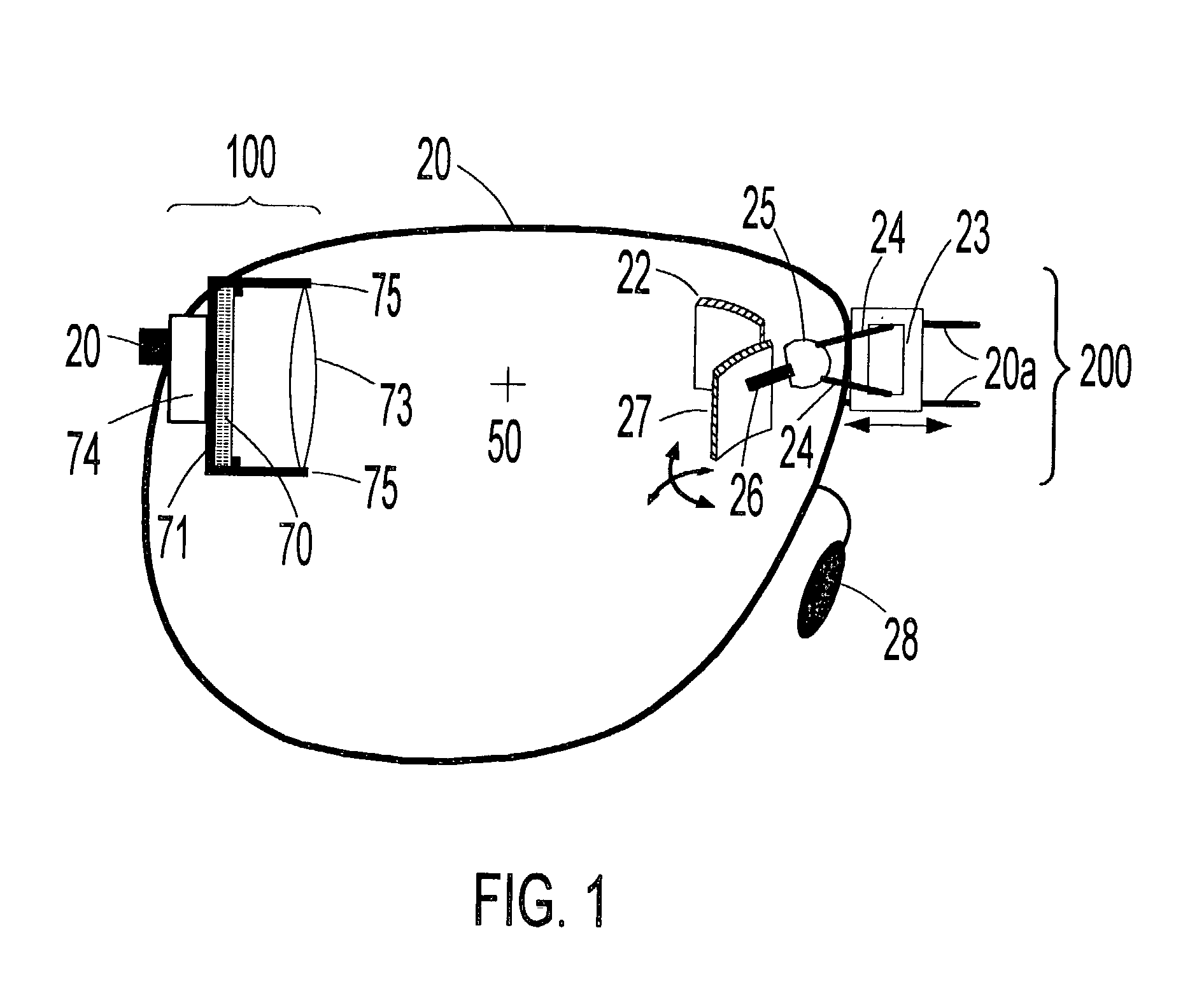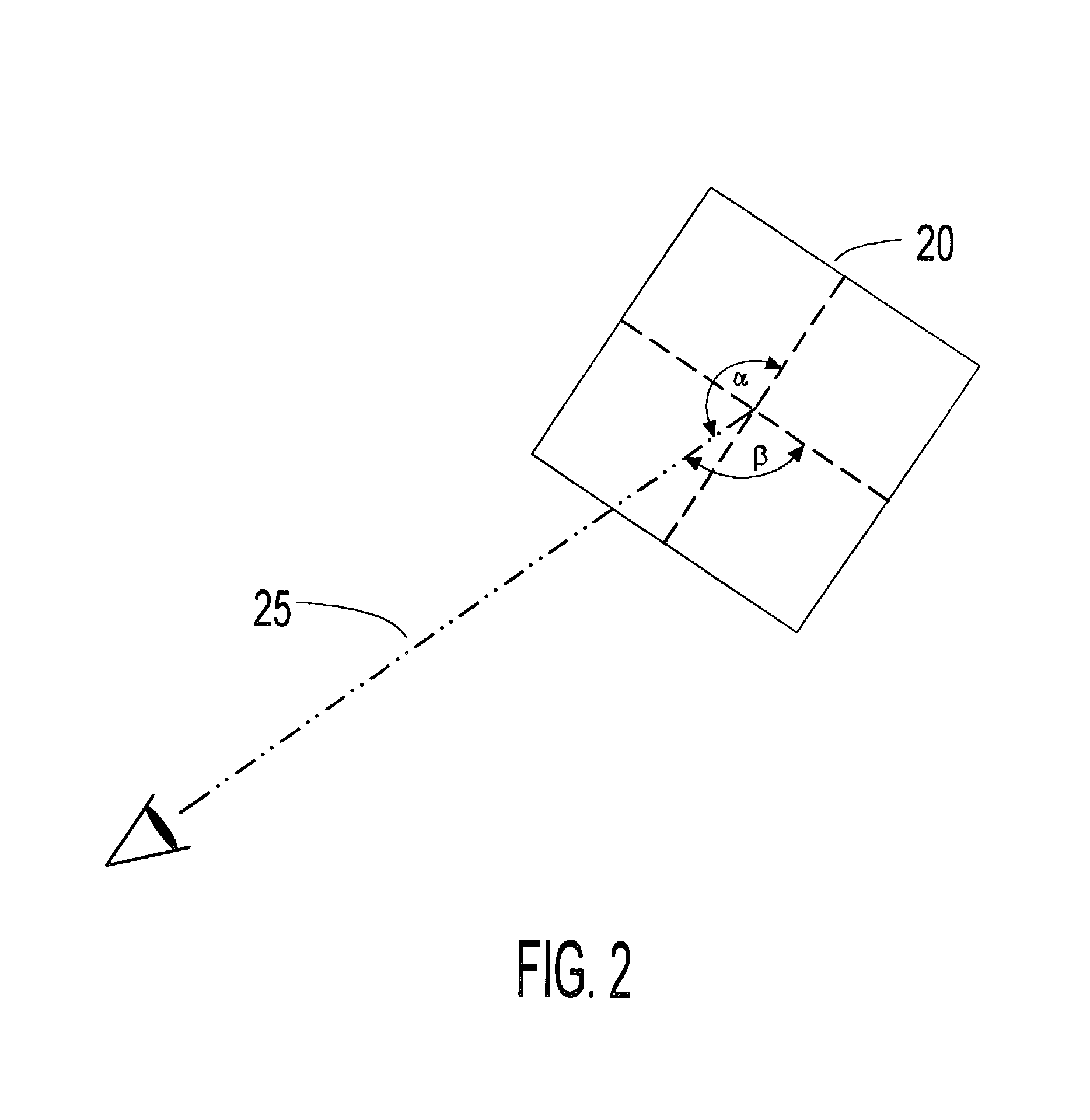Virtual display apparatus for mobile activities
a virtual display and mobile activity technology, applied in static indicating devices, instruments, optics, etc., can solve the problems of occlusion of a portion of forward fov, its suitability primarily, and increase the complexity of construction, so as to prevent slippage and/or dislodging of the head-mounted support
- Summary
- Abstract
- Description
- Claims
- Application Information
AI Technical Summary
Benefits of technology
Problems solved by technology
Method used
Image
Examples
Embodiment Construction
[0140] Another embodiment of the invention is a lensless virtual display headset based on a spectacle type frame with a QVGA microdisplay positioned next to the cheekbone of the wearer and a near-eye optic positioned below eye level. A tooth-geared, linear translation SFSM allows the near-eye optic to be positioned directly below the eye of each user and an image warping chip included in the electrical and electronic means is programmed to establish one dimensional orthogonality. An adjustable bridge support--in the form of a ball joint--allows the spectacle frame to be "squared-off" for each user's facial structure. In addition, flexible nose pads, consisting of thin metal extensions coated with a deformable and pliable polymer, may be pinched together or spread apart to allow the device to be securely and comfortably fit to different users. Flexible earpieces, consisting of a bendable, goose-neck type shaft coated with a pliable polymer, provide a further degree of adaptability fo...
PUM
 Login to View More
Login to View More Abstract
Description
Claims
Application Information
 Login to View More
Login to View More - R&D
- Intellectual Property
- Life Sciences
- Materials
- Tech Scout
- Unparalleled Data Quality
- Higher Quality Content
- 60% Fewer Hallucinations
Browse by: Latest US Patents, China's latest patents, Technical Efficacy Thesaurus, Application Domain, Technology Topic, Popular Technical Reports.
© 2025 PatSnap. All rights reserved.Legal|Privacy policy|Modern Slavery Act Transparency Statement|Sitemap|About US| Contact US: help@patsnap.com



